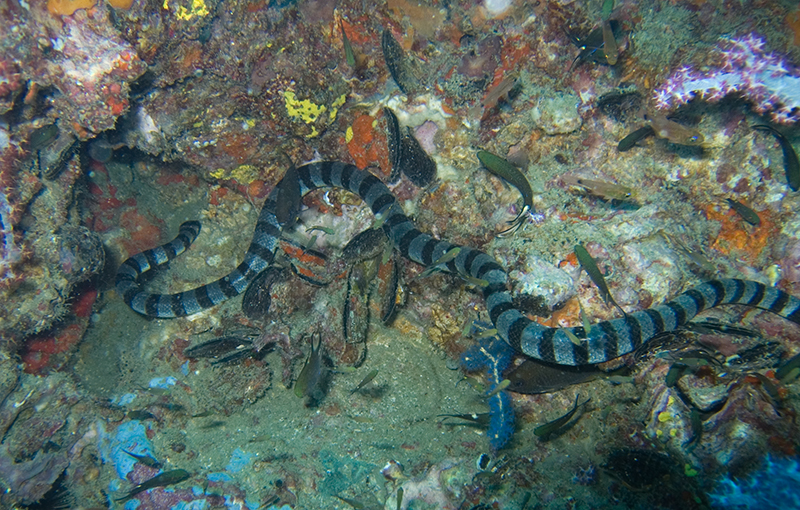 The process of hibernation (or brumation) in reptiles and amphibians seems subject to a great many factors. For example, I have noticed that spotted and Eastern box turtles, and other temperate North American species, vary greatly in this regard. In captivity, wild-caught individuals usually slow down (activity and feeding) during the winter, even if kept warm and given a photoperiod of 12 hours. Captive-born animals of the same species most often continue to feed throughout the winter.
The process of hibernation (or brumation) in reptiles and amphibians seems subject to a great many factors. For example, I have noticed that spotted and Eastern box turtles, and other temperate North American species, vary greatly in this regard. In captivity, wild-caught individuals usually slow down (activity and feeding) during the winter, even if kept warm and given a photoperiod of 12 hours. Captive-born animals of the same species most often continue to feed throughout the winter.
Green frogs, garter snakes, musk turtles and others, however, usually stay active if kept warm in winter, even if wild-caught.
A recent email from a colleague brought up the subject of bearded dragons. His animal becomes lethargic and ceases feeding in October, despite a long photoperiod, and high ambient and basking temperatures. Most bearded dragons in the US pet trade are several generations removed from the wild, yet the tendency to hibernate persists in some. Many bearded dragons, however, remain active all year. I am wondering if what we are seeing is related to the natural range of our pets’ ancestors… perhaps those from certain areas hibernate in the wild and retain this pattern in captivity?
A Request for Help
Internal (circadian) rhythms exert their influence on most animals, and an understanding of their workings is vital from both a pet-keeping and conservation point of view. I would greatly appreciate being informed of any seasonal changes in activity that you notice among your pets.
Some North American turtles are incredibly cold-tolerant, and are being studied to see if the mechanisms they use might be applied to the possible storage of human organs destined for transplant. The abstract of an interesting The Journal of Herpetology article is posted at:
http://www.jstor.org/pss/1565569
If you’re looking for general care information on bearded dragons, check out my article: Bearded Dragon Natural History and Captive Care.
 That Reptile Blog – Reptile, Amphibian and Exotic Pet Care and Information
That Reptile Blog – Reptile, Amphibian and Exotic Pet Care and Information


 Compatible animals include spotted, tiger, marbled, slimy and other terrestrial salamanders (see photo), wood frogs (see photo), gray, barking, green and other native treefrogs and land snails. Assuming that space permits the establishment of a warm basking area (without over-heating the toads), you can also house a number of small reptiles with American toads. I have had kept them with 5-lined skinks, Italian wall lizards, green anoles, DeKay’s (brown) snakes, ring-necked snakes and smooth green snakes. There are other possible toad-companions as well – please write in if you would like more suggestions.
Compatible animals include spotted, tiger, marbled, slimy and other terrestrial salamanders (see photo), wood frogs (see photo), gray, barking, green and other native treefrogs and land snails. Assuming that space permits the establishment of a warm basking area (without over-heating the toads), you can also house a number of small reptiles with American toads. I have had kept them with 5-lined skinks, Italian wall lizards, green anoles, DeKay’s (brown) snakes, ring-necked snakes and smooth green snakes. There are other possible toad-companions as well – please write in if you would like more suggestions. American toads will utilize favored burrows for years on end, with wild individuals documented as remaining within the same territory for over 20 years. If you have a population living nearby, encourage the toads to stay nearby by providing a shallow, easily-exited pool and some retreats in the form of half-buried, inverted clay flower pots. Resident toads will learn to gather at an outdoor light in hopes of an insect meal, and will otherwise delight you with their comings and goings.
American toads will utilize favored burrows for years on end, with wild individuals documented as remaining within the same territory for over 20 years. If you have a population living nearby, encourage the toads to stay nearby by providing a shallow, easily-exited pool and some retreats in the form of half-buried, inverted clay flower pots. Resident toads will learn to gather at an outdoor light in hopes of an insect meal, and will otherwise delight you with their comings and goings. Research focusing on the black-banded sea krait (Laticauda semifasciata) showed that the snakes obtain all their drinking water from fresh water springs (sea kraits leave the water on occasion), and refuse to drink sea water even when dehydrated. The majority of other sea snakes, which do not travel overland, are presumed to drink from the surface layer of fresh water that develops on the ocean when it rains. Indeed, sea snakes reach their greatest diversity in regions with heavy rainfall, and sea kraits are most common near fresh water spring outflows.
Research focusing on the black-banded sea krait (Laticauda semifasciata) showed that the snakes obtain all their drinking water from fresh water springs (sea kraits leave the water on occasion), and refuse to drink sea water even when dehydrated. The majority of other sea snakes, which do not travel overland, are presumed to drink from the surface layer of fresh water that develops on the ocean when it rains. Indeed, sea snakes reach their greatest diversity in regions with heavy rainfall, and sea kraits are most common near fresh water spring outflows.